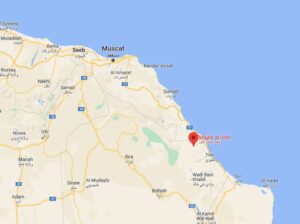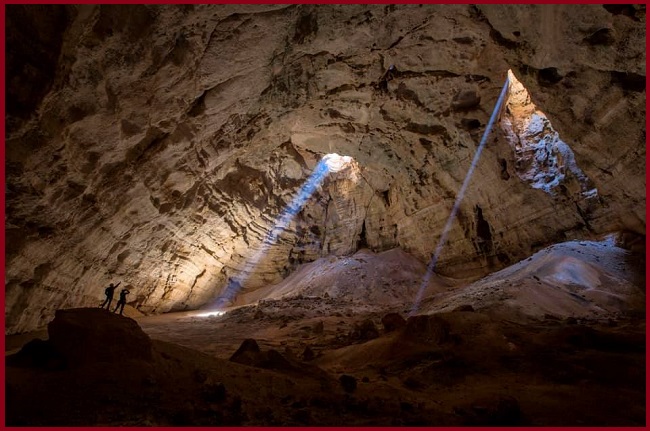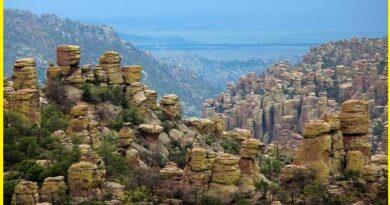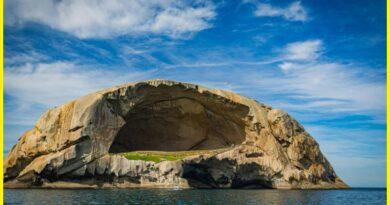The Secret Chambers- Majlis al Jinn, Oman’s Mysterious Underground Sanctuary
Majlis al Jinn
Majlis al Jinn, also known as the “Meeting Place of the Jinn,” is one of the largest underground cave chambers in the world. It is located in the Selma Plateau of the Muscat Governorate in Oman. The name “Majlis al Jinn” is derived from Arabic, where “Majlis” means “meeting place” and “Jinn” refers to supernatural creatures in Islamic mythology. The cave is named so because of local legends that claim it was used as a gathering place for these mystical beings.
Majlis al Jinn is known for its stunning natural beauty and remarkable size. The cave has gained popularity among adventurers and thrill-seekers for its challenging access and unique geological features. Due to its remote location and challenging access, it has been a popular destination for cave explorers and base jumpers.
The Sultanate of Oman, in an effort to preserve the natural environment and its fragile ecosystem, has restricted access to Majlis al Jinn. This has been done to protect the cave and its surrounding area from potential damage caused by excessive human activity.
Majlis al Jinn Cave map-Majlis Al Jinn Cave is situated next to the village of Fins in Willyat Qurayyat, in the Muscat Governorate.

Majlis al jinn cave story
The story of the exploration of Majlis al Jinn’s cave is a fascinating tale of adventure, perseverance, and human ingenuity. The cave itself is a natural wonder, with its immense size and unique geological formations, located in the remote and rugged landscape of Oman.
In the late 1970s, a team of explorers led by Don Davidson, a renowned American cave explorer, learned about the existence of a massive cave in the Selma Plateau. Don, a hydrogeologist, was employed by the government of Oman’s Public Authority for Water Resources (PAWR), which later became the Ministry of Water Resources. Intrigued by the reports, the team embarked on a challenging journey to locate and explore this elusive cave. After an arduous search, they discovered the entrance to what would later be known as Majlis al Jinn.
The team faced numerous obstacles during their exploration, including navigating treacherous terrain and contending with the technical difficulties posed by the cave’s sheer size and depth.
The name “Majlis al Jinn” was given to the cave as a nod to local folklore and legends that spoke of the cave being a meeting place for the Jinn, supernatural beings in Arabian mythology. This added an aura of mystery and intrigue to the already captivating story of the cave’s exploration.
also read- Babele-An Unusual Rock feature in the Bucegi Plateau Romania
Since its discovery, Majlis al-Jinn has captured the imagination of adventure enthusiasts and explorers from around the world. Despite its remote location and the challenges associated with accessing it, the cave continues to draw the attention of those seeking to unravel its secrets and experience its natural grandeur.
The 158m drop in Majlis al Jinn is the deepest free rappel into any known cave in Oman or the Arabian Peninsula. Don and Cheryl Jones surveyed and photographed the cave in April and May 1985.
Geology
The Selma Plateau is a shallow syncline on the northeastern limb of the Jabal Bani Jabir anticline. The cave was formed in fossiliferous carbonate rocks of the Middle Eocene Hadhramaut Group, Dammam Formation. It is one of five vertical cave entrances on the Selma Plateau, but the only one with no lower exit.
Majlis al Jinn is a single chamber measuring about 310 meters by 225 meters, with a domed ceiling 120 meters high and three entrances in the roof. The totally free-standing roof is only about 40 meters thick over most of the cave. The deepest part of the cave is 178 meters below the top of the highest entrance.
Access to the cavern is possible only through a free descent of one of three vertical entrances in the ceiling. The entrance is formed by water seeping through the weakened marly limestone in the zones of fracturing. The two largest entrances are called Asterisk and First Drop, the smallest is Cheryl’s Drop. Entrance depths- Cheryl’s Drop – 158.2 meters. Asterisk – 139.6 meters. First Drop – 118.0 meters.
There are a few stalactites and draperies on the ceiling and walls, but moderate and fragile speleothems are common on the floor. Growth only occurs during times of seepage and drips following heavy rains.

Majlis al jinn cave tour
Majlis al-Jinn was heavily restricted due to conservation efforts and concerns for the fragile ecosystem within the cave. The rugged and challenging terrain, coupled with the delicate nature of the cave, has led the Omani authorities to limit public access. This is primarily to ensure the preservation of the cave and its surrounding environment.
If you’re interested in visiting Majlis, I recommend contacting local tour operators or the relevant Omani authorities directly to inquire about the current status of access and any permitted tours. They would be able to provide you with the most up-to-date information regarding the possibility of arranging a tour or obtaining special permits for exploration.
How to reach Majlis al jinn
Reaching Cave can be challenging as it is located in a remote and rugged area in the Selma Plateau of the Muscat Governorate in Oman. accessing the cave involves a combination of hiking and climbing through rough terrain, making it essential to be well-prepared for the journey.
Here are some general directions to reach the vicinity of Majlis al Jinn-
Travel to Muscat, Oman- Muscat is the capital city of Oman and serves as the main gateway to the surrounding regions. You can reach Muscat via international flights to Muscat International Airport.
Arrange a local guide or tour operator- Given the challenging terrain and restricted access to the cave, it is advisable to seek the assistance of local guides or tour operators familiar with the area. They can provide guidance and necessary permissions for exploration if it’s currently allowed.
Travel to the Selma Plateau- From Muscat, you would need to travel to the Selma Plateau, which is located a few hours away from the city. The journey might involve a combination of road travel and hiking.



